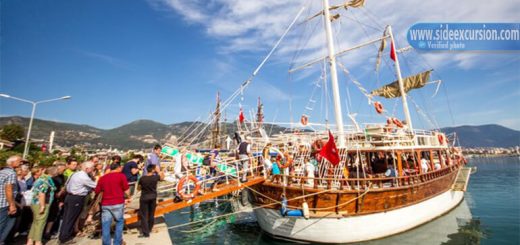Luxury Holidays in Italy
Sardinia … a fabulous place to see.. Sassari, Sardinia’s second largest city, is a lively university and cultural center, and boasts some fine buildings in Catalan Gothic, Baroque, and Neoclassical styles. Walk down Corso Vittorio Emanuele II, the main street in medieval times, looking up to see old porticos and windows on homes from the region’s Spanish period, five centuries ago. Museo Nazionale Sanna, one of Sardinia’s most important museums, displays archaeological collections that include Nuragic bronze figures and jewelry, as well as Roman artifacts. Don’t miss the Duomo, whose fa?ade is a riot (you might say a hodge-podge) of 17th-century ornament styles, created by stone carvers from Milan. Several other churches are worth looking inside if they are open, but the most memorable of all stands almost alone in a landscape of grazing sheep about 12 kilometers south of Sassari on SS 131. The black and white striped tower soars above the church and ruined cloister of Santissima Trinit? di Saccargia, the finest example of Pisan architecture in Sardinia. Inside, if you’re lucky enough to find it open, are 13th-century frescoes.
The Giara, located in the center-east of Sardinia, hosts a rare herd existing in Italy and in Europe of little wild horses and a park with cork oaks forests and Mediterranean maquis. This area is well known also for its archaeological monuments such as the famous Barumini nuraghe, so called “Su Nuraxi” declared Intangible Cultural Heritage of Humanity. The nuraghes are defensive towers to be found throughout the island, marked by their truncated cone shape and built with great blocks of roughly hewn stone, using the dry-stone technique. The nuraghi are defensive towers found throughout the island and are marked by their truncated cone shape; they are constructed in huge stone blocks according to the dry stone technique. Read more on Luxury Travel in Sardinia
Guiseppe Garibaldi was the founding father of modern Italy. He spent the last years of his life on the tiny island of Caprera, which is part of La Maddalena archipelago. His farm and house, Casa Bianca, have been transformed into a small museum where you can see the boat in which Garibaldi rowed to the mainland and his famous red shirt. This bold modern structure in the port area of Olbia houses some of the island’s most ancient history. Don’t miss the Roman era vessel which was found in the towns main port. Entrance is free, which is a nice little bonus.
Just like many other islands, Sardinia has a very rich and unique wildlife. The isolation has pretty much given it the gift of diversity. None of the animals that live on or near Sardinia are poisonous or very dangerous, so you can explore the island without fear. Unique species of deer and foxes live in the woods and mountains, while many different types of birds, including the Chaffinch and Flamingo, visit the island every year in great numbers. Monk seals and turtles live in the Sardinian waters, and the Balaenoptera Physalus (or fin whale) can be spotted near the shores quite regularly.








